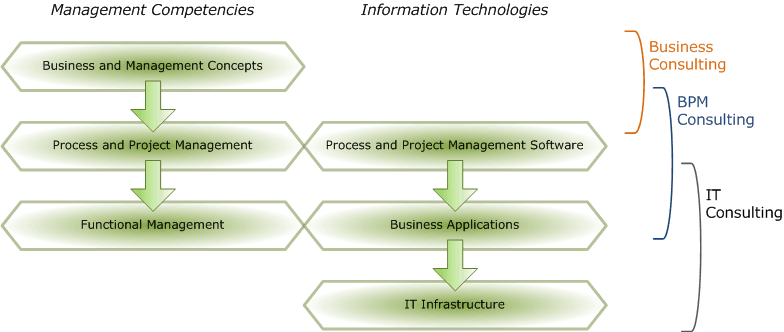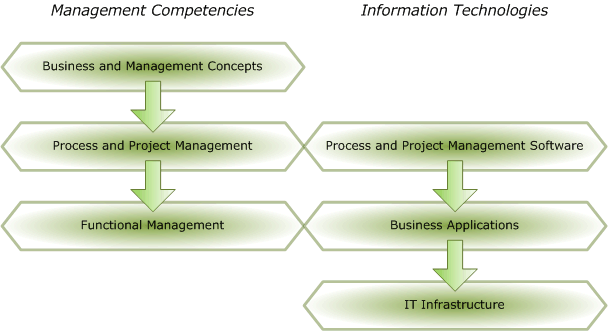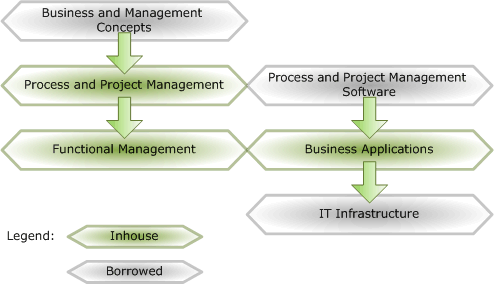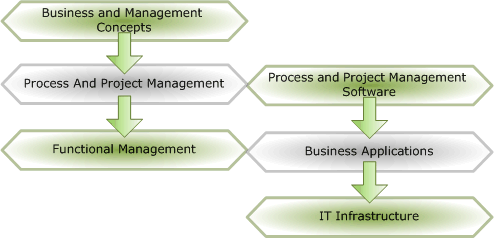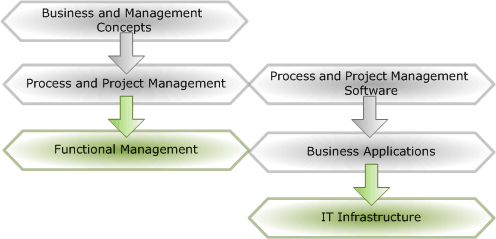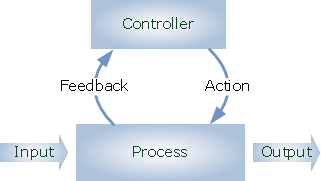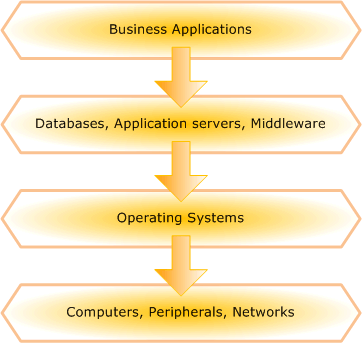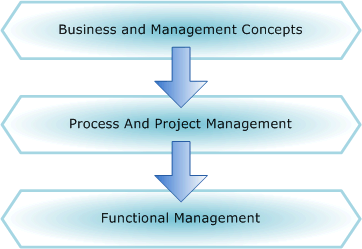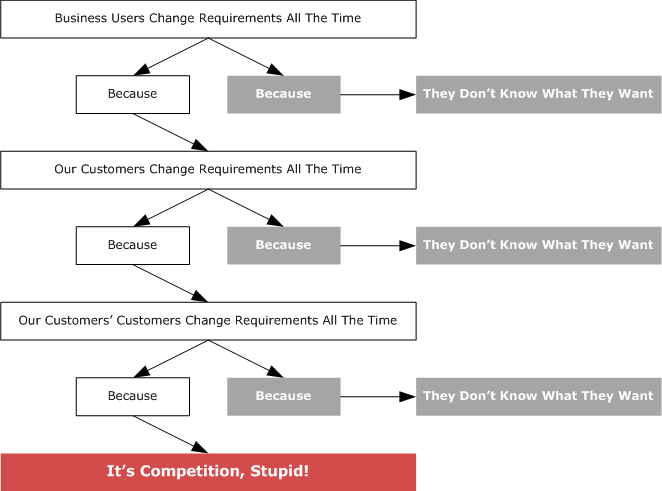I believe the role of KPI in BPM projects is exaggerated.
A common point of view: if you didn’t measure the KPI before the project started then you will have nothing to compare the result with and therefore it will be difficult to prove the project’s effect. In a recent Process Maker Blog post “Top 3 BPM Software Pitfalls to Avoid” forgetting to measure KPI is pointed out as the most common mistake of BPM projects. However in the next post on the matter “Are KPIs Necessary for BPM Success?” Ami wrote: “I imagine that a BPM project can be wildly successful without KPIs”. Which means a negative answer to the question in terms of formal logic: KPI is not a necessity.
But where exactly KPI is not a necessity?
1. When the target is business transformation rather than fine tuning of the process
Typical driver for BPM is an urgent need for major changes in the business. Dissatisfaction of customers and partners, the growing pressure of competition, increased risk of claims by regulators are forcing companies to move from functional to process management.
If the company has no issues, or they are ignored or denied or unrecognized then there is no room for improvements. I guess the efficiency of BPM will be difficult to justify in such situation either with or without KPI.
Business transformation may begin with tactical initiatives but eventually strategic changes must occur in how the company interacts with the outside world, in the way departments interact with each other and in the way the company evaluates its performance.
At the end of the day the company will reconsider the metrics it uses. For example the percentage of orders shipped on time will be measured not on the basis of terms promised by the company but rather to the terms expected by the client. It doesn’t make sence to use old metrics but the new ones will only appear at the end as the result of BPM project.
2. When it’s about successfull project launch rather than further project development
When questioned by customers about KPI and BAM we usually answer: “we’ll need to work hard before it comes to analytics.”
Opportunities for process improvements are pretty obvious during initial process discovery, implementation of process execution within BPMS and first iterations of process improvement. Eliminate duplication of functions, assign less significant instances of the process to less-skilled personnel, implement parallel execution of activities instead of sequential - these are common improvement hints.
It usuall takes about a year to eliminate obvious non-optimalities. Further progress requires numerical data about the process. This means not only the KPI as integral indicators but also the details: the duration of activities and statistical distribution of process data affecting its trajectory. By using these data and simulation tools one can suggest non-trivial improvments supported by quantitative data: how much will be saved from the process cost (or alternatively how much will be spent extra) and how it will affect the KPI.
However if wider context is considered the question arises: what is the best focus for the process team - further polishing of the process or switching to another process not touched yet?
3. When the company has manageability issues
The thesis of the importance of KPI is a variation on the theme “You can only manage what you can measure.” Sorry, I don’t buy it. When I walk with the dog I manage it without the help of instruments. When I’m driving in dense urban stream I’m too busy to pay attention to the dashboard. You can drive without a tachometer but not without brakes or steering.
Brakes and steering are part of direct (action) control channel, speedometer and fuel indicator are part of reverse (feedback) channel. Action is more important than the feedback. It comes to the dashboard ergonomics only if you are satisfied with the brakes. If you are not then no dashboard design will save. And how do you rate the quality of the brakes - by measuring the stopping distance? Probably no - you just feel it.
I’m amazed by by business leaders stating that bottomline figures are the only importance for them. Sure they are important but what shall we do about them - pray? Even the most strong-willed leader can not order the profits to grow. You can order people, but when the organization reaches certain size and complexity this approach stops working so you have to deal with the system and with processes.
We did not command the speedometer needle to move to the mark “90″ - we press on the gas or brake, i.e. we use the direct control channel. Similarly, to achieve better bottomline results it is necessary to put hands on the business processes and manage employees and other resources better by means of improved processes.
4. When the process discovery is the primary objective
A friend CEO once said to me: “You see, business is running pretty well but I have fewer understanding of how it works. And it starts bothering me.”
His concern is business vulnerability: whenever the business environment changes or a key manager leave they’ll be in trouble. He wants science instead of magic. Or better to say, science in addition to magic because leadership is a kind of magic. BPM is a scientific organization of labor of the XXI century.
Business process discovery is a precise science and also a fascinating task. From the “happy path” to various “rainy day scenarios”, from primitive block diagrams to the interaction between asynchronously executed business processes and to the understanding of the interactions between different units within the company. It’s neither “to be” nor “as-is”, it’s “as really is”.
Valid process diagram can only be obtained via execution. ”What you model is what you run” is the principle of BPM systems. Simple ”drawing” of business processes is a fruitless exercise. Works for ISO certification but not for management decisions.
What is worse than the lack of maps for the commander? Only erroneous maps.
5. When the top management is directly involved into the project
I was taught that majority of leaders belong to the psychological type of intitive/introvert. They trust more to the intuition than analitics. This doesn’t mean they are weak in mathematics - usually just the opposite: they are good enough to realize the true value of analytics.
What can KPI give to such leader? First, KPI provides information only about the past and the present but he is interested in the future. Secondly, the relationship between KPI and bottomline are not obvious. For example, how the percentage of orders completed on time mentioned above will affect the profit or the market share?
By contrast, here the case from our practice. Company’s CEO has said at the presentation of pilot BPM project results: “During the project we managed to make profitable three orders which should have become unprofitable as several ones before.” (The optimized process guaranteed speedy calculations of costs and precise specifications which was the key to successfull negotiations with customers in their business.) Do you believe KPI would impress him? I doubt it.
The involvement of the top management is typical for a medium-sized companies. The situation is usually different in large companies: the project management and responsibility is delegated to a middle manager while senior management is only interested in outcomes. Here KPI are in demand: a middle manager isn’t in position to operate with qualitative assessments, he must provide numbers to the top. Besides, his psychological type is probably analyst.
If the top management will be able to evaluate not only achieved KPI but also the intangible benefits of BPM then everything is fine. But if he trust only the numbers then the project is in trouble.
Any strategic initiative (and BPM is a strategy) should be counted several moves ahead. It’s like in chess: some moves are material gains but more often the move is aimed at improving the position which allows a player to perform fruitfull combinations. In terms of chess the BPM project grants both material gains (fast wins) and position improvments (the possibility to implement arbitrary business innovation on the basis of acquired competence and installed tools). Evaluating BPM on the basis of short-term gains only - and this is where pushing KPI is leading - is fundamentally wrong.
Summary
KPI is a good thing but let’s not overestimate it. If you missed KPI completely - it’s a mistake. But it is a reasonable approach to sacrifice it because of the considerations above.
One may argue: “If KPI is generally a good thing, why throwing it away - it won’t hurt.” It will, actually. You can do something useless only if you are not doing something necessary. Time is a valuable resource in a BPM project; undue delays lead to loss of stakeholders’ enthusiasm. The project slows down, resulting in even less enthusiasm, etc.
Top managemer’s time is especially valuable resource. If he suspects pure formalism in what you are doing then he may lose faith in the success of BPM initiative and switch to another project, also promising. He usually has a number of options to choose from.

